Gaggenau AW 280-120, AW 280-190, AW 281-120, AW 281-190 User Manual
Gaggenau Operating and installation instruction
Extractor hood
AW 280190/280120 AW 281190/281120
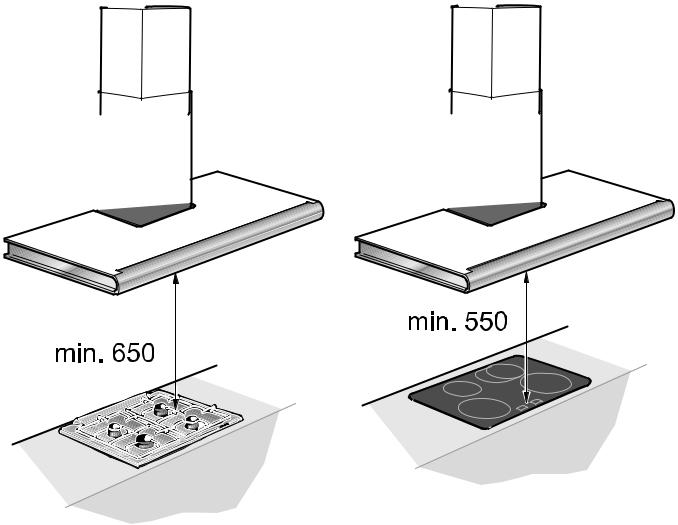
Fig. 1 |
|
Abb. 1 |
|
GAS |
|
ELECTRIC |
|
|
|
|
|
|
|
|
|
|
|
|
|
|
|
|
|
|
|
|
|
|
|
|
|
|
|
|
|
|
|
|
|
2

Table of Contents
Operating Instructions
Operating modes |
4 |
|
|
Exhaust-air mode |
4 |
|
|
Circulating-air mode |
4 |
|
|
Coanda effect |
5 |
||
|
|
|
|
Operating for the First Time |
6 |
|
|
|
|
||
|
If you encounter a problem |
6 |
|
|
|
|
|
|
Safety instructions |
7 |
|
|
|
|
|
|
Operating procedure |
8 |
|
Intensive setting |
9 |
|
|
Special functions |
9 |
|
|
|
|
|
|
Filters and maintenance |
10 |
|
|
Grease filters |
10 |
|
|
Saturation indicator F |
10 |
|
|
Activated carbon filter |
11 |
|
|
|
|
|
|
Cleaning and care |
12 |
|
|
|
|
|
|
|
Replacing the light bulbsn |
13 |
|
Installation Instructions
Important information |
15 |
|
|
|
|
|
|
|
Prior to installation |
16 |
|
Exhaust-air mode |
16 |
|
|
Circulating-air mode |
17 |
|
|
Preparing the wall |
18 |
||
|
|
|
|
Electrical connection |
19 |
|
|
|
|
|
|
|
Installation |
20 |
|
3

Operating modes
Exhaust-air mode
•Installation accessories for exhaust air mode.
Ventilation duct
AD280/281-012 for ceiling heights of 2.25–2.62 m
AD280/281-022 for ceiling heights of 2.62–3.01 m.
•The extractor-hood fan extracts the
kitchen vapours and conveys them through the grease filter into the atmosphere.
•The grease filter absorbs the solid particles in the kitchen vapours.
•The kitchen is kept almost free of grease and odours.
When the extractor hood is operated in exhaustair mode simultaneously with a dif ferent burner which also makes use of the same chimney (such as gas, oil or coal-fired heaters, continuous-flow heaters, hot-water boilers) care must be taken to ensure that there is an adequate supply of fresh air which will be needed by the burner for combustion.
Safe operation is possible provided that the underpressure in the room where the burner is installed does not exceed 4 Pa (0.04 mbar).
This can be achieved if combustion air can flow through non-lockable openings, e.g. in doors, windows and via the air-intake/exhaust-air wall box or by other technical measures, such as reciprocal interlocking, etc.
If the air intake is inadequate, there is a risk of poisoning from combustion gases which are drawn back into the room.
An air-intake/exhaust-air wall box by itself is no guarantee that the limiting value will not be exceeded.
Note: When assessing the overall requirement, the combined ventilation system for the entire household must be taken into consideration. This rule does not apply to the use of cooking appliances, such as hobs and ovens.
Unrestricted operation is possible if the extractor hood is used in recirculating mode – with activated carbon filter.
Circulating-air mode
•Installation accessories for circulating air mode.
Ventilation duct
AD280/281-112 for ceiling heights of 2.36–2.62 m
AD280/281-122 for ceiling heights of 2.62–3.01 m.
•An activated carbon filter must be fitted for this operating mode (see Filters and maintenance).
•The extractor-hood fan extracts the kitchen vapours which are purified in the grease filter and activated carbon filter and then conveyed back into the kitchen.
•The grease filter absorbs the grease particles in the kitchen vapours.
•The activated carbon filter binds the odorous substances.
If no activated carbon filter is installed, it is not possible to bind the odorous substances in the cooking vapours.
4
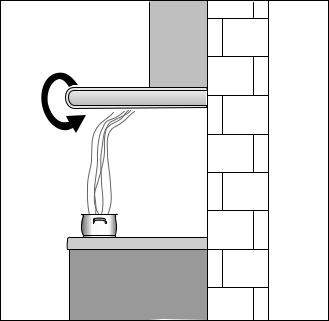
Coanda ef fect
•You do not need to activate the Coanda effect. The Coanda air flow is always active at every fan level. Cooking vapours are extracted particularly well at the front of the cooking field.
•The Coanda effect may allow you to operate the extractor hood at a lower, quieter level than you were previously accustomed to.
•The Coanda air flow exits the top of the extractor hood’s front panel. Do not place any objects on the extractor hood: these may disrupt the Coanda effect.
5
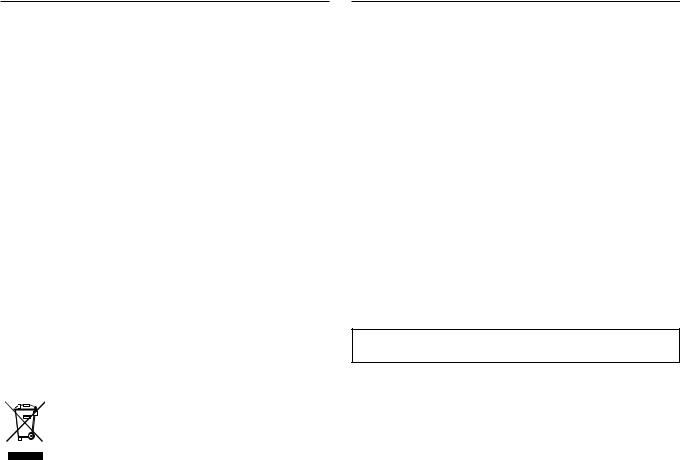
Operating for the First Time |
If you encounter a problem |
|
|
|
|
The Instructions for Use apply to several versions of this appliance. Accordingly, you may find descriptions of individual features that do not apply to your specific appliance.
This extractor hood complies with all relevant safety regulations.
Repairs should be carried out by qualified technicians only.
Improper repairs may put the user at considerable risk.
Before using your appliance for the first time, please read these Instructions for Use carefully. They contain important information concerning your personal safety as well as on use and care of the appliance.
Please retain the operating and installation instructions for a subsequent owner.
This appliance is labelled in accordance with European Directive 2002/96/EG
concerning used electrical and electronic appliances (waste electrical and electronic
equipment – WEEE). The guideline determines the framework for the return and recycling of used appliances as applicable throughout the EU.
If an F appears in the display :
• See "Filters and maintenance" Section.
If is not possible to operate the extractor hood:
•Disconnect the extractor hood from the mains electricity supply by pulling out the plug or switching it off at the main fuse box.
Wait for approx. 1 minute and then switch it on again.
If you have any questions or if a fault occurs, please call Customer Service.
(See list of Customer Service representatives).
When you call, please quote the following:
E-Nr. FD
Enter the relevant numbers into the box above. The E-Nr. (product no.) and FD (production date) are shown on the nameplate which can be seen inside the extractor hood after the filter frame has been detached.
The manufacturer of the extractor hoods accepts no liability for complaints which can be attributed to the design and layout of the pipework.
6
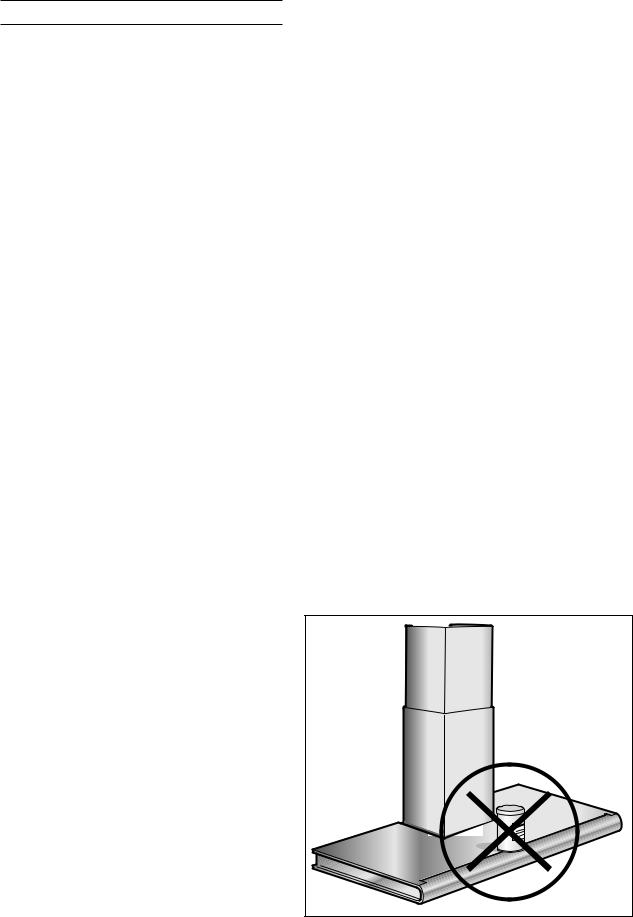
$ Safety instructions
Do not flambé food directly under the extractor hood.
Risk of grease filter catching fire due to flames.
The hotplates must always be covered with a utensil.
The extractor hood must not be operated above a solid-fuel or gas fire (coal, wood, etc.) (see installation instructions).
Do not operate all hotplates simultaneously over a prolonged period (max. 15 minutes) at maximum thermal load, otherwise there is a risk of burns from touching the housing surfaces or a risk of damaging the extractor hood. When operating the extractor hood above a hob, operate the hood at maximum setting if three or more hotplates are on at the same time.
Do not use the appliance if damaged.
The appliance is not intended for use by young children or infirmed persons without supervision. Young children should be supervised to ensure they do not play with the appliance.
If the connecting cable for this appliance is damaged, the cable must be replaced by the manufacturer or his customer service or a similarly qualified person in order to prevent serious injury to the user.
The appliance may be connected to the mains by a qualified technician only.
Dispose of packaging materials properly (see Installation instructions).
Never allow children to play with the appliance.
Do not let adults or children operate the appliance unsupervised:
–if they are mentally or physically unable to use the appliance safely and correctly,
–if they don’t have the knowledge and experience to use the appliance safely and correctly.
This extractor hood is designed for domestic use only.
Light bulbs must always be fitted when the extractor hood is in use.
Defective bulbs should be replaced immediately to prevent the remaining bulbs from overloading.
Never operate the extractor hood without a grease filter.
Overheated fat or oil can easily catch fire.
If you are cooking with fat or oil, e.g. chips, etc., never leave the cooker unattended.
Carefully clean the extractor hood before switching on for the first time.
Do not place any objects on the extractor hood.
The slot for the Coanda air flow must be free at all times.
7
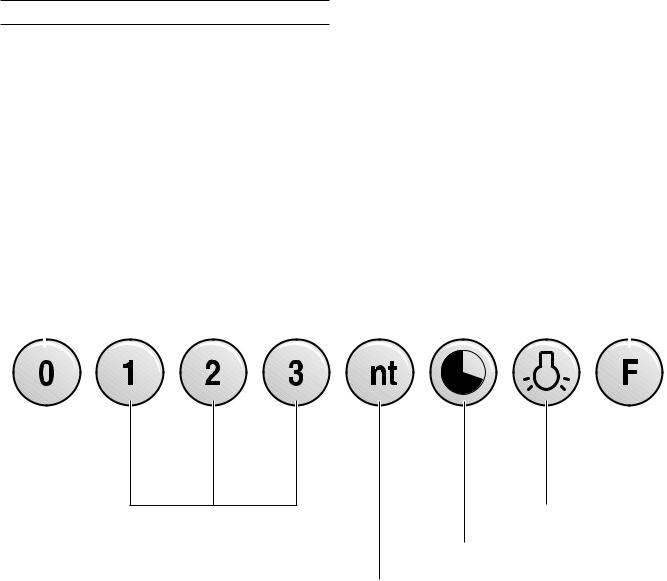
Operating procedure
The most effective method of removing vapours produced during cooking is to:
•Switch the ventilator ON as soon as you begin cooking.
•Switch the ventilator OFF a few minutes after you have finished cooking.
|
Fan OFF |
|
Saturation indicator |
|
|
|
|
|
|
|
|
|
|
|
|
|
|
|
|
|
|
|
|
|
|
|
|
|
|
Light
Fam settings
Fan follow-on
Intensive setting
8
